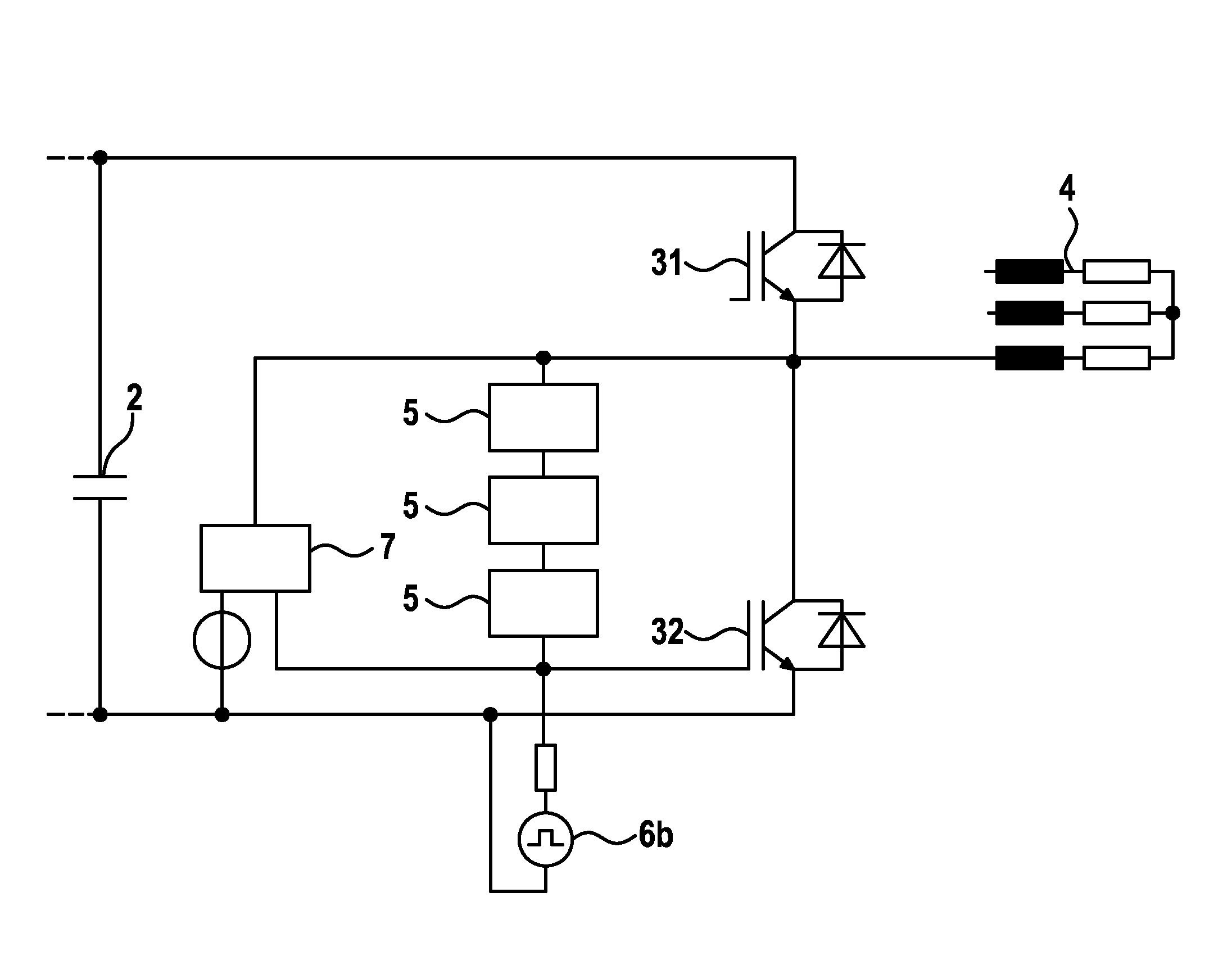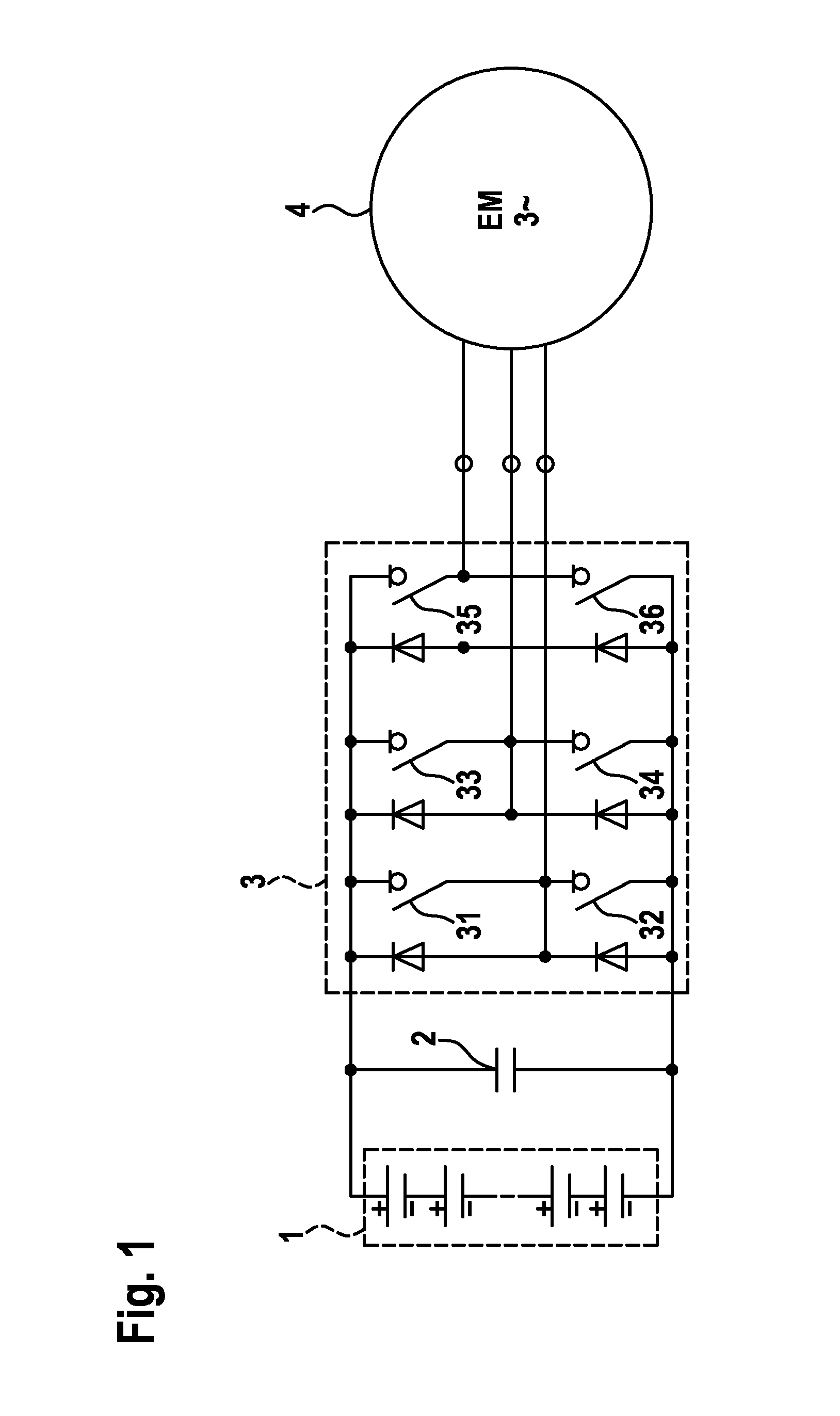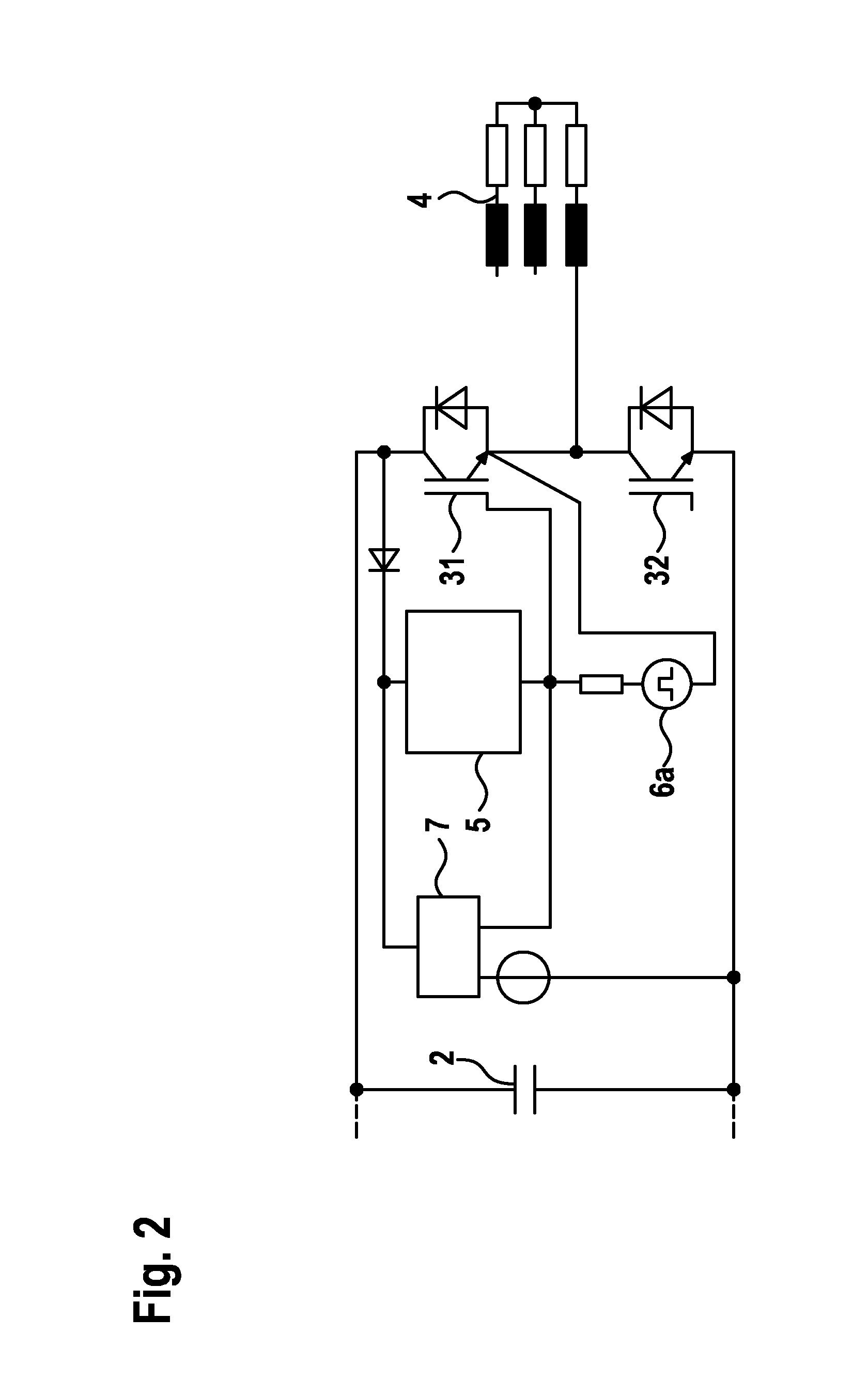Overvoltage protection circuit for a power semiconductor and method for protecting a power semiconductor from over-voltages
a protection circuit and power semiconductor technology, applied in the direction of electronic switching, pulse technique, power conversion systems, etc., can solve the problem of the power semiconductor switch being destroyed, and achieve the effect of low cost, low tolerance range, and optimized operating parameters
- Summary
- Abstract
- Description
- Claims
- Application Information
AI Technical Summary
Benefits of technology
Problems solved by technology
Method used
Image
Examples
Embodiment Construction
[0029]FIG. 1 shows a basic circuit diagram of a three-phase inverter for a drive system. A DC voltage is initially provided by an electrical storage unit 1, for example a battery. This DC voltage is buffered by a DC-link capacitor 2 and is subsequently supplied to an inverted rectifier 3 (inverter). The inverter 3 converts the supplied DC voltage in such a way that an AC voltage results which is suitable for activating an electrical drive 4.
[0030]The inverter 3 comprises six power semiconductor switches 31-36 in the example depicted here. The semiconductor switches 31-36 preferably relate in each case to a MOSFET or an IGBT. In order to protect the power semiconductor switches 31-36, a free-wheeling diode is connected in each case in parallel to each of these components. The overvoltage protection circuit for each of the power semiconductor switches 31-36, which is described in greater detail below, is not depicted in this figure for the sake of clarity.
[0031]Although the present in...
PUM
 Login to View More
Login to View More Abstract
Description
Claims
Application Information
 Login to View More
Login to View More - R&D
- Intellectual Property
- Life Sciences
- Materials
- Tech Scout
- Unparalleled Data Quality
- Higher Quality Content
- 60% Fewer Hallucinations
Browse by: Latest US Patents, China's latest patents, Technical Efficacy Thesaurus, Application Domain, Technology Topic, Popular Technical Reports.
© 2025 PatSnap. All rights reserved.Legal|Privacy policy|Modern Slavery Act Transparency Statement|Sitemap|About US| Contact US: help@patsnap.com



